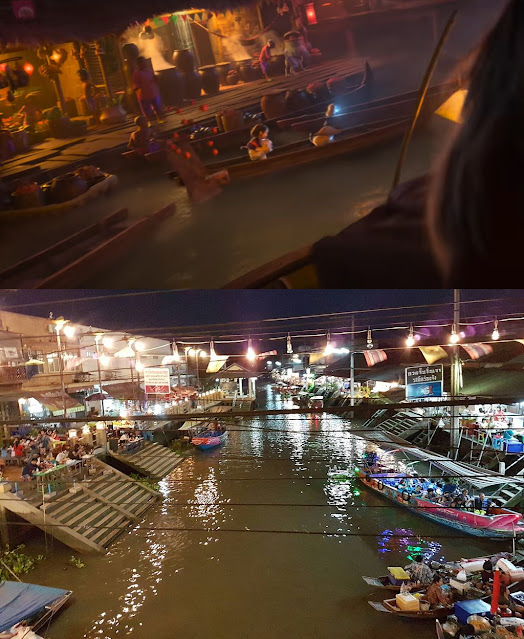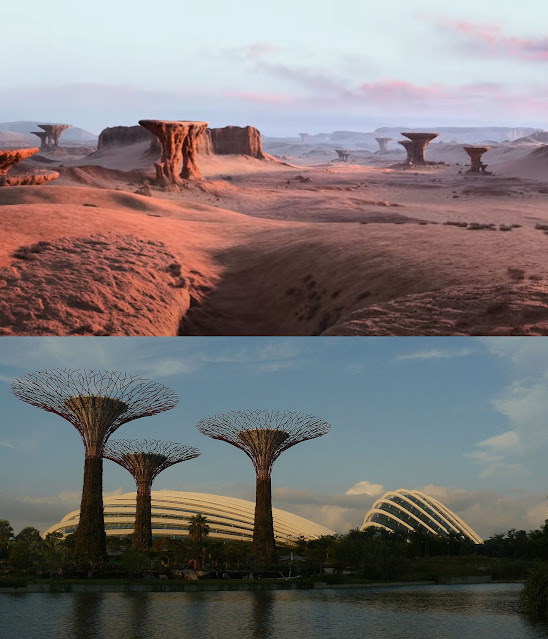What countries are Kumandra based on?
 |
| A map of Kumandra as tweeted by Joaquin Baldwin, Disney director of cinematography - layout |
At some point, Disney realized that not all Asians look the same, and Southeast Asians need representation, too. So with good intentions, "Raya and the Last Dragon" was born, and 680 million people found themselves reflected on the silver screen.
Where is the land of Kumandra though? It's a question Disney itself found difficulty answering; you can't reduce 11 countries with a wealth of languages and ethnicities to two hours of storytelling. So, the company gathered the Southeast Asia Story Trust, a team of anthropologists, architects, dancers, linguists and artists, to help make "Raya and the Last Dragon" look authentic and feel as close to home as possible.
Let's check out the five lands of Kumandra and find their equivalents in real life.
Fang
 |
| From space, Singapore (below via terraprints.com) shares geographic similarities with the fictional nation of Fang |
Isolated from the mainland by an artificial canal, the snobby capital of Fang from above looks like the animated version of Singapore, an island city-state cut off from Malaysia by a strait. The only developed economy in Southeast Asia is as renowned for its prosperity as its fierce regard for the rule of law. Guarded by an ambush of serlots, Fang sounds every bit like the Lion City in real life.
Despite its undeniable advancements and stunning tropical beauty, Singapore is still backwards in that it still carries out the death penalty and even lashings as punishment. Homosexual activity is also considered illegal here. (Update: It was decriminalized in late 2022.) Many of its citizens have spoken out against such antediluvian attitudes, as mirrored on film by the reluctant antihero Namaari. In terms of LGBTQI rights, Fang could also be a stand-in for Brunei, a small, rich sultanate known for its brutal, homophobic laws. Not only is the death penalty legal here; it's done by stoning.
Architecturally, Fang mixes brutalist influences from the west with the "rumah gadang" style common in Indonesia. Fang also takes design inspiration from the Angkor Wat in Siem Reap, Cambodia, which makes sense because the sprawling temple complex used to be home to a prosperous civilization. The concentric terraces around Fang moreover seem to reference the terraced rice fields of the Philippines and Indonesia.
In some scenes, the kids of Fang could be seen watching a shadow play in class. It looks a lot like the Balinese shadow puppet theatre of "wayang." Clearly every land in Kumandra is not any one Southeast Asian country in particular.
Heart
 |
| Halong Bay, Vietnam is studded with fantastic limestone islets (above via collectmoments), inspiring Disney animators to come up with the fantastical land of Heart, below |
But what country is Raya in? The Kumandran nation of Heart is also shaped like an island and might as well be Singapore. But with its oceanlike color scheme of cerulean and teal, Heart feels more like Phuket, Bali, Palawan, and other resort destinations in Southeast Asia than the more futuristic, urbanized island state. Plus, Disney comes right out in saying that the painterly mountain with a hole in Heart takes after the limestone rock formations across Ha Long Bay in Vietnam.
The fortress protecting the orb also borrows from the architecture of the Angkor Wat complex. Sisu and the dragon statues in the movie might appear familiar to audiences as the "naga", serpent-like water gods depicted in stone from Angkor Wat to Bali.
Then again, Raya calls her pet Tuk Tuk, the name for the famous motorized rickshaws plying the streets of Bangkok in Thailand. Young Raya also wears something akin to the traditional Thai garment known as the "pha biang" or "sabai" and is seen being served "tom yum" soup. As for Chief Benja, he seems to prefer blue and green "batik" clothes that would not look out of place in Indonesia or Malaysia.
Spine
 |
| Southeast Asia may be tropical but in rare instances some of its peaks, like those near Sapa, Vietnam (below via Nguyễn Trần Minh Long), experience wintry weather |
Unlike Spine, it doesn't really snow in Southeast Asia—except for the far northern reaches of Myanmar near the Himalayas and sometimes in the mountains of Vietnam—nor does bamboo grow as thick as redwood trunks here. Disney obviously took liberties with this one because you're far likelier to see snowy bamboo forests in Japan or Korea, which are north of Southeast Asia.
According to Disney, however, the homes in Spine are modeled after the multi-windowed, high-roofed structures found in Laos and Indonesia, especially the dwellings of the Minangkabau and Toraja tribes.
Is Raya Filipino? Disney is mum on this but they did sneak a clever detail into one of the Spine homes: a larger-than-life pair of wooden spoon and fork, which are hanged on the wall as lucky charms of sorts for many households in the Philippines.
Talon
 |
| The Amphawa floating market (below via Marida1996) along the Mae Klong River, not to be confused with the Mekong, still buzzes with activity after dark, much like the Talon night markets above |
Talon is likely Thailand, the floating markets and spirit houses being just some of the giveaways. The Thai capital of Bangkok has in fact been called the Venice of the East for its many “khlong” or canals, which commuters can use to get around the city by boat.
Kumandra's Dragon River stands for the Mekong, one of the longest rivers in the world which flows through six countries including Thailand, Laos, Cambodia, Myanmar and Vietnam. All are no strangers to riverside markets and houses on stilts above water.
At night, Talon glows like the floating market of Amphawa in the Thai province of Samut Songkhram. The lanterns throughout Talon recall those in Hoi An, Vietnam when it goes all aglow for its monthly moon festival commemorating Buddha's birth and enlightenment. In neighboring countries with similarly strong Buddhist traditions, people would float candlelit lanterns called "krathong” down the canals and waterways during the Loy Krathong and Lai Huea Fai festivals in Thailand and Laos, respectively.
Tail
 |
| Looks familiar? The Supertrees at the Gardens by the Bay in Singapore (below via John Tillemans) resemble the silhouette of the plateaus and rocky landscape of Tail, above |
Although Southeast Asia has deserts here and there (such as the Bao Trang and Mun Ne sand dunes in Vietnam), Disney actually got its inspo for Tail from America. Animators dug up wild western films and images of red rock canyons to capture the desolate look of the Kumandra nation. However, some eagle-eyed audiences have likened the pyramidical plateaus and geological formations in Tail to the Supertree Grove of the Gardens by the Bay in Singapore.
As its name implies, Tail comes off as a place that has been left behind. If we take this to mean the economic standings in Southeast Asia, this fictional nation would likely be Myanmar and East Timor with their unfortunately low GDP per capita.
All the nations of Southeast Asia represent serious money, however. As an integrated bloc, the region is already one of the five biggest economies in the world. It would be reductive to say that unity could solve all these countries' problems overnight but the takeaway from the movie is clear. Together these nations can rise like an economic dragon, and no force against it shall prosper.





Comments